
Visual Computing for Industry Biomedicine and Art
Scope & Guideline
Empowering Innovations Across Biomedicine, Industry, and Art
Introduction
Aims and Scopes
- Biomedical Imaging and Analysis:
The journal emphasizes the application of visual computing in medical imaging, including techniques such as computed tomography, magnetic resonance imaging, and ultrasound, to enhance diagnostic accuracy and treatment planning. - Machine Learning and AI Integration:
A significant focus is placed on integrating machine learning and artificial intelligence with visual computing to develop advanced algorithms for image classification, segmentation, and analysis in healthcare and industrial settings. - Industrial Applications of Visual Computing:
The journal explores the use of visual computing techniques for optimizing industrial processes, including automation, defect detection, and 3D reconstruction, promoting efficiency and innovation in manufacturing. - Art and Aesthetic Computing:
There is a unique contribution towards the exploration of visual computing in the arts, including the development of tools and methods for visual analysis and the creation of digital art. - Interdisciplinary Research:
The journal encourages interdisciplinary studies that combine computer science, engineering, medicine, and the arts, fostering collaboration among researchers from diverse fields.
Trending and Emerging
- Advanced Machine Learning Techniques:
There is an increasing focus on sophisticated machine learning methodologies, such as deep learning and reinforcement learning, particularly in medical imaging and industrial applications, reflecting the growing impact of AI. - Radiomics and Predictive Analytics in Healthcare:
The integration of radiomics with predictive analytics for patient outcomes is becoming more prominent, showcasing the importance of data-driven approaches in personalized medicine. - Interactivity and Real-Time Processing:
Emerging research is exploring interactive visual computing methods that allow real-time data processing and visualization, which is essential for applications in surgery and dynamic industrial environments. - Digital Twins and Simulation Technologies:
The concept of digital twins is gaining attention, with studies focusing on their application in monitoring and optimizing industrial processes, indicating a shift towards more integrated and real-time systems. - Augmented and Virtual Reality Applications:
There is a growing interest in the use of augmented and virtual reality for training, education, and therapeutic applications, reflecting a trend towards immersive technologies in various fields.
Declining or Waning
- Traditional Image Processing Techniques:
There is a noticeable decrease in the publication of papers focused solely on traditional image processing methods, as the field shifts towards more advanced techniques involving machine learning and AI. - General Surveys without Novel Contributions:
Papers that provide broad surveys of existing technologies or methods without introducing innovative approaches are becoming less frequent, indicating a preference for novel research and applications. - Basic Computational Theories:
Research focusing solely on foundational computational theories without practical applications in visual computing has seen a decline, as the journal prioritizes applied and interdisciplinary research.
Similar Journals
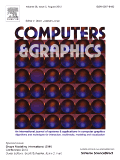
COMPUTERS & GRAPHICS-UK
Connecting Researchers with Cutting-Edge DiscoveriesCOMPUTERS & GRAPHICS-UK is a premier journal dedicated to the fields of computer graphics, computer-aided design, and human-computer interaction. Published by Pergamon-Elsevier Science Ltd, this esteemed journal has been a critical resource for researchers and professionals since its inception in 1975. With an impressive impact factor and ranked in the second quartile for key disciplines such as Computer Vision and Pattern Recognition, and Engineering (Miscellaneous), it provides a platform for high-quality, peer-reviewed research spanning theoretical advancements, innovative technologies, and practical applications. Notable for its interdisciplinary approach, the journal also embraces contributions that bridge diverse areas within computer science. Although lacking Open Access options, readers can benefit from its rich archive and cross-disciplinary insights, making it essential for anyone looking to advance their knowledge and practice in computer graphics and related fields. The journal is located in the United Kingdom, at The Boulevard, Langford Lane, Kidlington, Oxford OX5 1GB, and continues to be a cornerstone for scholarly exchange and advancement in the digital visualization domain.

Jordanian Journal of Computers and Information Technology
Connecting Scholars Through Open Access InsightsJordanian Journal of Computers and Information Technology, published by Princess Sumaya University and SRSF, stands as a significant platform for scholarly research in the realm of computer science, particularly in topics related to emerging technologies and information systems. With its Open Access model initiated in 2015, the journal facilitates global access to high-quality research findings, embodying the principles of knowledge sharing and academic collaboration. The journal's ranking in the Q3 category of Computer Science (miscellaneous) and its placement in the 54th percentile of Scopus' General Computer Science rankings underscore its growing reputation among researchers and professionals alike. Situated in Amman, Jordan, the journal actively contributes to the regional and international discourse on computing methodologies, applications, and innovations, making it an indispensable resource for scholars seeking to advance their understanding and engage with contemporary issues in technology.
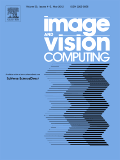
IMAGE AND VISION COMPUTING
Elevating academic discourse in image and vision computing.Image and Vision Computing, published by Elsevier, serves as a leading international journal focused on the dynamic fields of computer vision, pattern recognition, and signal processing. With its esteemed Q1 category rankings in these areas and an impressive standing in Scopus metrics, where it ranks 19th in Computer Vision and 23rd in Signal Processing, this journal has firmly positioned itself at the forefront of academic research and innovation. Established in 1983, it continues to publish cutting-edge research that drives advancements in technology and applications across various domains. The journal is committed to disseminating high-quality, peer-reviewed articles that address significant challenges and propose novel solutions, making it an essential resource for researchers, practitioners, and students alike. While not an open access journal, Image and Vision Computing offers a wealth of valuable insights into the ever-evolving landscape of visual computing technologies.
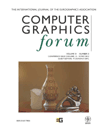
COMPUTER GRAPHICS FORUM
Exploring the Future of Digital DesignCOMPUTER GRAPHICS FORUM, an esteemed journal published by Wiley, is a leading platform for disseminating cutting-edge research in the fields of computer graphics and computer-aided design. With a prestigious Q1 ranking in both Computer Graphics and Computer-Aided Design and Computer Networks and Communications (2023), this journal consistently showcases high-impact studies that influence the development of visualization techniques and graphic systems. Covering a wide array of topics from rendering algorithms to virtual and augmented reality applications, COMPUTER GRAPHICS FORUM is committed to fostering innovation and interdisciplinary collaboration within the global research community. Although it does not offer open access, the journal maintains a rigorous peer-review process, ensuring the highest standards of academic quality and integrity. With its rich history since 1982 and an ongoing commitment to advancing the state of knowledge in computer graphics, this journal is essential reading for researchers, industry professionals, and students looking to stay at the forefront of technological advancements.

INTERNATIONAL JOURNAL OF COMPUTER VISION
Advancing the Frontiers of Computer Vision and AI.INTERNATIONAL JOURNAL OF COMPUTER VISION, published by Springer, is a premier peer-reviewed journal that stands at the forefront of the fields of Computer Vision and Artificial Intelligence. With a remarkable impact factor and rankings placing it in the Q1 category across key areas such as Computer Vision and Pattern Recognition, as well as Software, this journal serves as an essential resource for researchers, professionals, and students alike. Since its inception in 1987, it has aimed to advance the understanding and methodologies within the rapidly evolving landscape of computer vision technologies. Its location in the Netherlands underlines its international significance, and with Scopus rankings placing it in the top percentiles of its categories, the journal is recognized for its contribution to groundbreaking research and innovative applications. Although it is not an open-access journal, it still provides extensive access options through institutional and personal subscriptions, offering its readers in-depth insights and findings pivotal to their work in artificial intelligence and computational technologies.
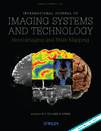
INTERNATIONAL JOURNAL OF IMAGING SYSTEMS AND TECHNOLOGY
Empowering Insights in Biomedical Imaging and BeyondINTERNATIONAL JOURNAL OF IMAGING SYSTEMS AND TECHNOLOGY, published by Wiley, is a leading journal dedicated to advancing the field of imaging systems and technologies. With an ISSN of 0899-9457 and E-ISSN 1098-1098, this esteemed journal offers a platform for high-quality research spanning essential interdisciplinary areas, including Biomedical Engineering, Computer Science, and Health Informatics. Recognized for its impactful contributions, it holds a commendable position in the Q2 quartile across multiple categories as of 2023. The journal boasts an excellent Scopus ranking, with notable acknowledgments like rank #49 out of 333 in Radiology, Nuclear Medicine, and Imaging, showcasing its relevance and importance in the academic community. Publishes annually from 1989 to 2024, it aims to bridge gaps in knowledge and foster innovative developments through rigorous peer-reviewed articles. Though it operates under a traditional access model, the journal maintains an accessible repository of cutting-edge research, making it indispensable for researchers, professionals, and students alike seeking to stay at the forefront of imaging technology advancements.

Traitement du Signal
Transforming Research into Engineering ExcellenceTraitement du Signal, published by the INT Information & Engineering Technology Association, is a distinguished journal that serves the vibrant field of Electrical and Electronic Engineering. With an ISSN of 0765-0019 and an E-ISSN of 1958-5608, this journal has made significant contributions to the discipline since its inception. While it currently operates under a non-open access model, it maintains its commitment to disseminating valuable research from 2010 to 2023, despite its recent discontinuation in Scopus coverage. Recognized in the third quartile (Q3) of the category in 2022, the journal provides a platform for researchers, professionals, and students to publish their findings on topics such as signal processing, communications, and related technologies. By curating high-quality articles, Traitement du Signal plays a crucial role in advancing knowledge and fostering innovation within the electrical and electronic engineering community.
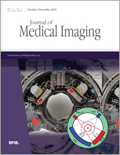
Journal of Medical Imaging
Exploring the Intersection of Optics and Imaging TechnologiesThe Journal of Medical Imaging, published by SPIE-SOC PHOTO-OPTICAL INSTRUMENTATION ENGINEERS, is an esteemed publication in the field of medical imaging, playing a pivotal role in advancing the discipline since its inception in 2014. With an ISSN of 2329-4302 and an E-ISSN of 2329-4310, this journal has garnered significant recognition, evidenced by its Q2 ranking in 2023 within the critical category of Radiology, Nuclear Medicine, and Imaging. The journal is dedicated to presenting cutting-edge research and innovations that enhance diagnostic imaging techniques and methodologies, appealing to a diverse audience of researchers, professionals, and students alike. Offering valuable insights into the interplay of optics and imaging technologies, it serves as a crucial resource for fostering knowledge and collaboration in the medical community. Notably, it holds a competitive rank of #136 out of 333 in its Scopus category, placing it in the 59th percentile—a testament to its influence and relevance in ongoing medical research. Therefore, the Journal of Medical Imaging stands out as an essential platform for disseminating transformative findings and innovations in healthcare imaging.

Proceedings of the ACM on Computer Graphics and Interactive Techniques
Exploring Innovations in Graphics and InteractionProceedings of the ACM on Computer Graphics and Interactive Techniques is a prestigious journal published by the Association for Computing Machinery (ACM), dedicated to advancing the field of computer graphics and interactive techniques. With an impactful presence in both the Q1 quartiles for Computer Graphics and Computer-Aided Design and Computer Science Applications as of 2023, this journal serves as a vital platform for disseminating cutting-edge research, innovative methodologies, and transformative applications. The journal covers a wide array of topics within the realm of computer graphics, fostering a vibrant community of researchers, professionals, and students who are committed to pushing the boundaries of technology. While the journal is not open access, it ensures wide visibility and rigorous peer-reviewed content, making it an essential resource for anyone invested in the dynamic landscape of computer science. Located in New York, USA, the Proceedings of the ACM on Computer Graphics and Interactive Techniques continues to play a crucial role in shaping the future of interactive systems and graphics technology.

VISUAL COMPUTER
Advancing the Frontiers of Visual ComputingVISUAL COMPUTER is a prestigious journal published by Springer, focusing on the dynamic fields of computer graphics, computer-aided design, computer vision, and software. Established in 1985, this interdisciplinary journal serves as a vital platform for sharing innovative research, applications, and developments crucial to the advancement of visual computing technologies. With a notable Q2 ranking in various categories, including Computer Graphics and Computer-Aided Design, and Computer Vision and Pattern Recognition, VISUAL COMPUTER demonstrates a solid impact within the academic community, marked by its Scopus rankings that reflect its significant contributions to the field. While the journal does not offer open access, it remains a reliable source of high-quality content for researchers, professionals, and students eager to stay abreast of emerging trends and techniques, ultimately fostering collaboration and knowledge exchange within the rapidly evolving landscape of visual computing.